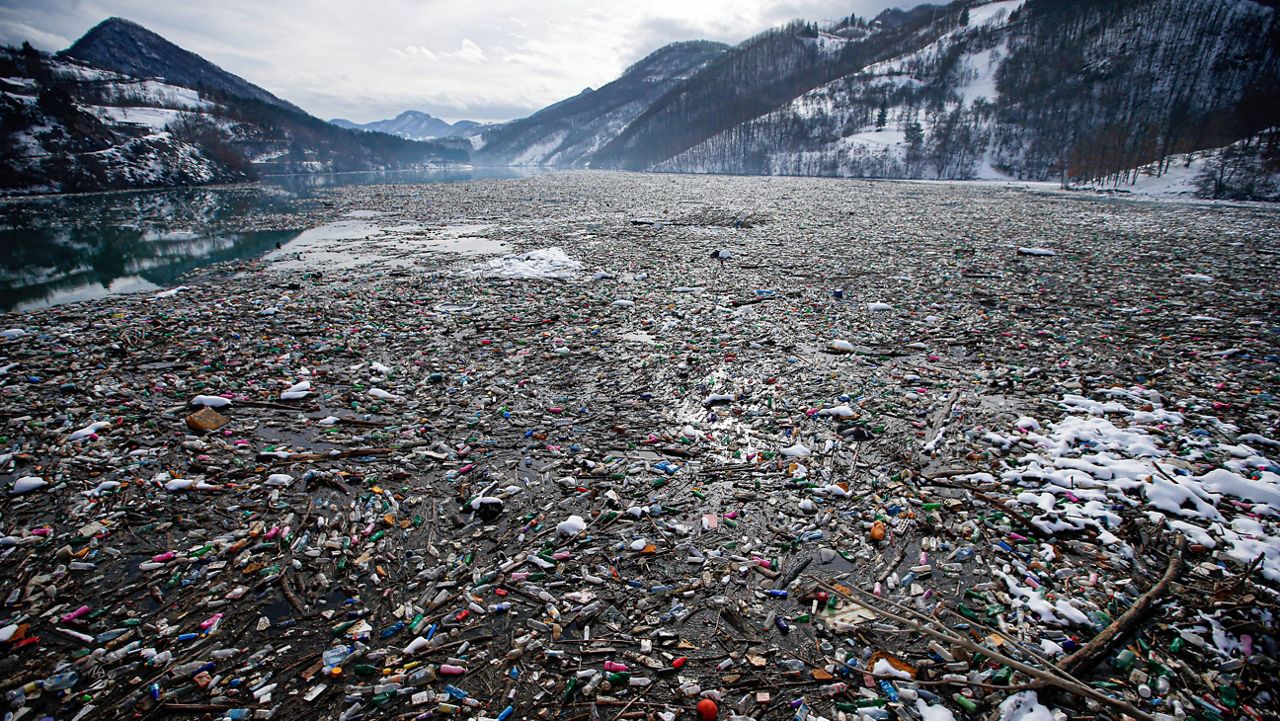Pollution from manufactured chemicals has exceeded the planetary boundary, putting the world’s stability — and humanity — at greater risk, an international group of researchers conclude in a new study.
What You Need To Know
- Pollution from manufactured chemicals has exceeded the planetary boundary, putting the world’s stability — and humanity — at greater risk, an international group of researchers conclude in a new study
- The study, published Tuesday in the scientific journal Environmental Science and Technology, is believed to be the first on the impact of “novel entities” — synthetic chemicals including plastics — on planetary boundary
- While the scientists behind the study said there are an estimated 350,000 different types of manufactured chemicals, they especially took aim at plastics
- The study found there has been a 50-fold increase in the production of chemicals since 1950, and the current level is expected to triple by 2050
The study, published Tuesday in the scientific journal Environmental Science and Technology, is believed to be the first on the impact of “novel entities” — synthetic chemicals including plastics — on planetary boundary, the demarcation line of Earth’s stability. The study was conducted by 14 researchers from Sweden, the United Kingdom, Canada and Denmark.
While the scientists behind the study said there are an estimated 350,000 different types of manufactured chemicals, including pesticides, industry chemicals, chemicals in consumer products and pharmaceuticals, they especially took aim at plastics.
The study found there has been a 50-fold increase in the production of chemicals since 1950, and the current level is expected to triple by 2050.
Plastic production alone increased 79% from 2000 to 2015, and about 80% of all plastics ever produced remain in the environment, according to the paper.
“The pace that societies are producing and releasing new chemicals and other novel entities into the environment is not consistent with staying within a safe operating space for humanity,” Patricia Villarubia-Gómez of the Stockholm Resilience Centre, one of the paper’s authors, said in a news release.
Chemical pollution reaches even the most remote areas of the planet, and microplastic particles are found in high mountains down to the deep ocean, the study says.
“Some of these pollutants can be found globally, from the Arctic to Antarctica, and can be extremely persistent,” said study co-author Bethanie Carney Almroth from the University of Gothenburg in Sweden.
The researchers say there are many ways chemicals and pollutants can harm the planet’s health, including its climate and biodiversity. Carney Almroth said governments cannot keep up with the rate of pollutants appearing in the environment in order to adequately assess and address the problem.
In 2009, an international team of scientists looked back 10,000 years to identify nine processes that regulate the earth’s stability and resilience, including greenhouse gas emissions, the ozone layer, forests, freshwater and biodiversity, and quantified their boundaries. In 2015, they concluded that four boundaries had been exceeded, but the impact of novel entities had been unclear until now.
The new study’s authors are calling for a reduction in the production and release of pollutants and a shift to a circular economy by designing more chemicals and products that can be recycled.



